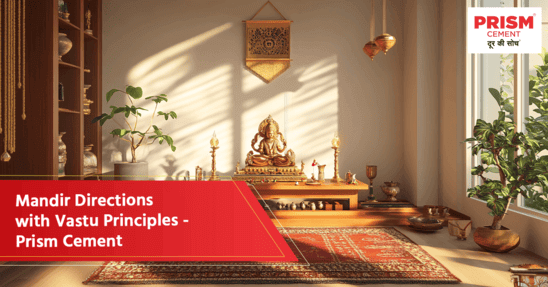Creating a peaceful, spiritually balanced pooja room as per vastu guidelines begins with choosing the ideal location for your mandir direction in home. Ancient Vastu Shastra principles guide homeowners to select orientations that foster harmony, prosperity, and serenity.
In this blog, we’ll explore the science behind mandir direction as per vastu, practical placement tips, and gentle touches of construction wisdom from Prism Cement to build a sacred space that endures through time.
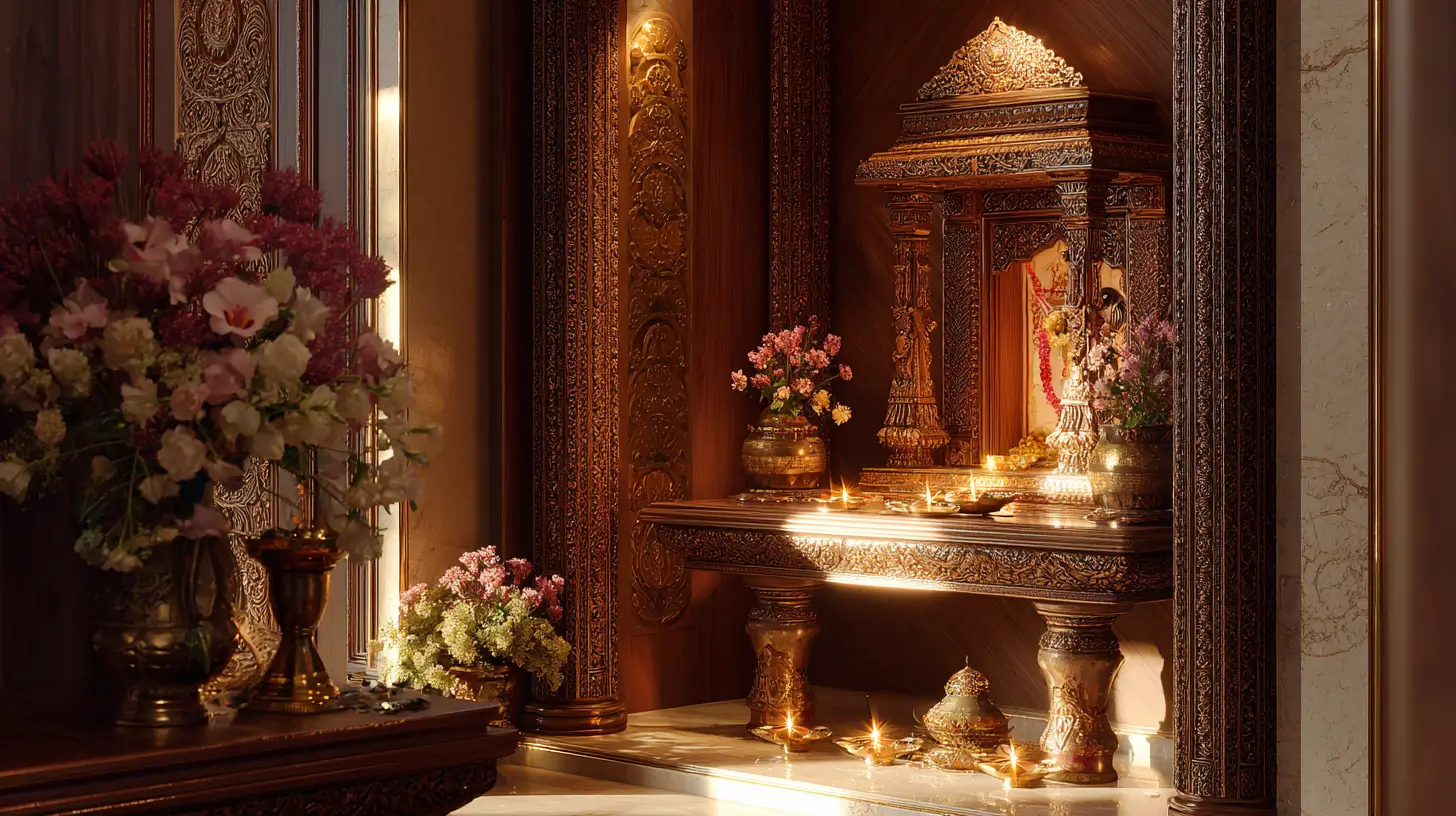
Why the Direction of the Temple Matters as per Vastu?
According to Vastu Shastra, each direction has a unique energy influence:
- Northeast (Ishan Kona) draws divine cosmic energy.
- East aligns with the rising sun—symbolizing purity and vitality.
- North attracts prosperity and abundance.
- South/Southeast are linked to fire and instability, which can disturb spiritual peace.
Choosing the correct mandir face direction in home is thus vital for elevating spiritual practice and improving home harmony.
Optimal Placement of Deities in the Home Mandir
Northeast (Ishan Kona) – The Ideal Choice
The northeast is widely considered the most auspicious location for your pooja room direction. Being the abode of Lord Ishana (a form of Shiva), this corner is believed to host divine energy and bring clarity, calm, and blessings into the space.
Positioning idols with their backs to this corner ensures that devotees face the powerful energy zone while worshipping.
Alternative Directions: East and North
When the northeast isn’t feasible, the east is the next best option, capturing morning sunlight and symbolizing new beginnings. The north is also suitable, as it is associated with Kubera—the deity of wealth and prosperity.
Centre of the House (Brahmasthan)
Avoid placing your mandir in the centre of the house (Brahmasthan)—this zone is considered sacred space meant for energy circulation, and placing a fixed structure like a mandir can disrupt the natural flow.
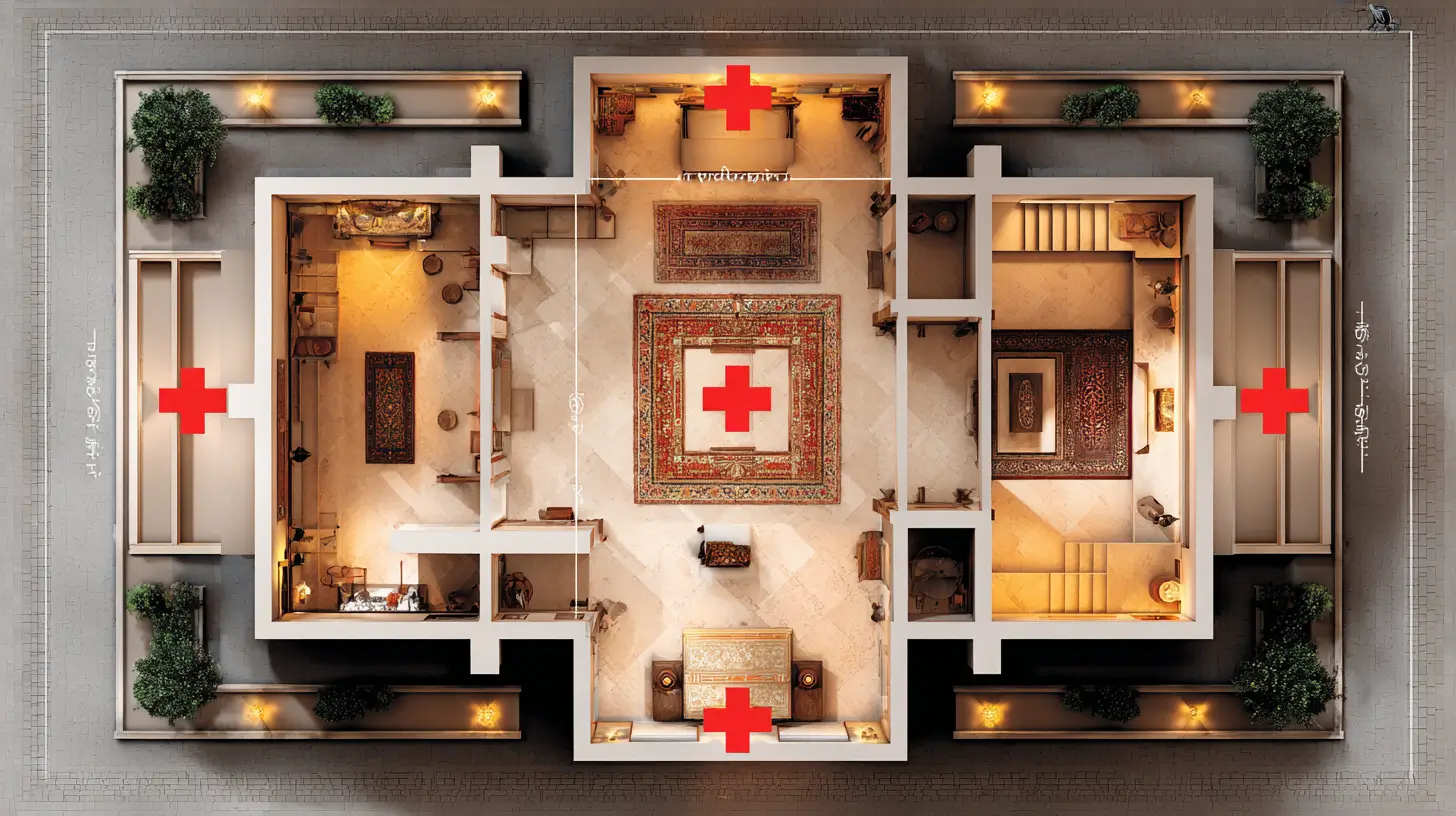
Directions to Avoid for Mandir Placement
South and Southeast
The south is governed by Yama (death) and can invite negative influences. Similarly, the southeast (Agni kona) is fire-dominant, potentially stirring discord and stress if used for worship spaces.
Placement Guidelines for Mandir and Idols
Idol Placement and Facing Direction
- Idols should face east or west, ensuring devotees face the opposite—often east—while worshipping.
- Avoid idols facing south or north
- Keep idols on a fixed pedestal or chowki, such that their feet are slightly below chest or eye level.
- Use modest-sized idols, ideally under nine fingers (~7 inches).
- Avoid placing different gods facing each other to prevent energy collision.
Items to Include and Avoid in the Mandir
Include:
- Incense, diya, bells, kalash with holy water, fresh flowers, and prayer books—all neatly arranged in a small cabinet in the south or west of the pooja room.
Avoid:
- Clutter, damaged idols, ancestor photos, Shani idols, Natraj or Rudra forms, or multiple Shivlings.
Practical Tips for Mandir Placement
Best Room and Floor Selection
- A dedicated room or alcove in the northeast is ideal.
- If not viable, a corner or wall in the east or north works well.
- Ground floor placement is preferred—avoiding basements or above toilets/kitchens.
- Avoid installing a mandir in bedrooms unless absolutely necessary; if so, ensure proper facing and clutter-free setup.
Material and Colour Suggestions
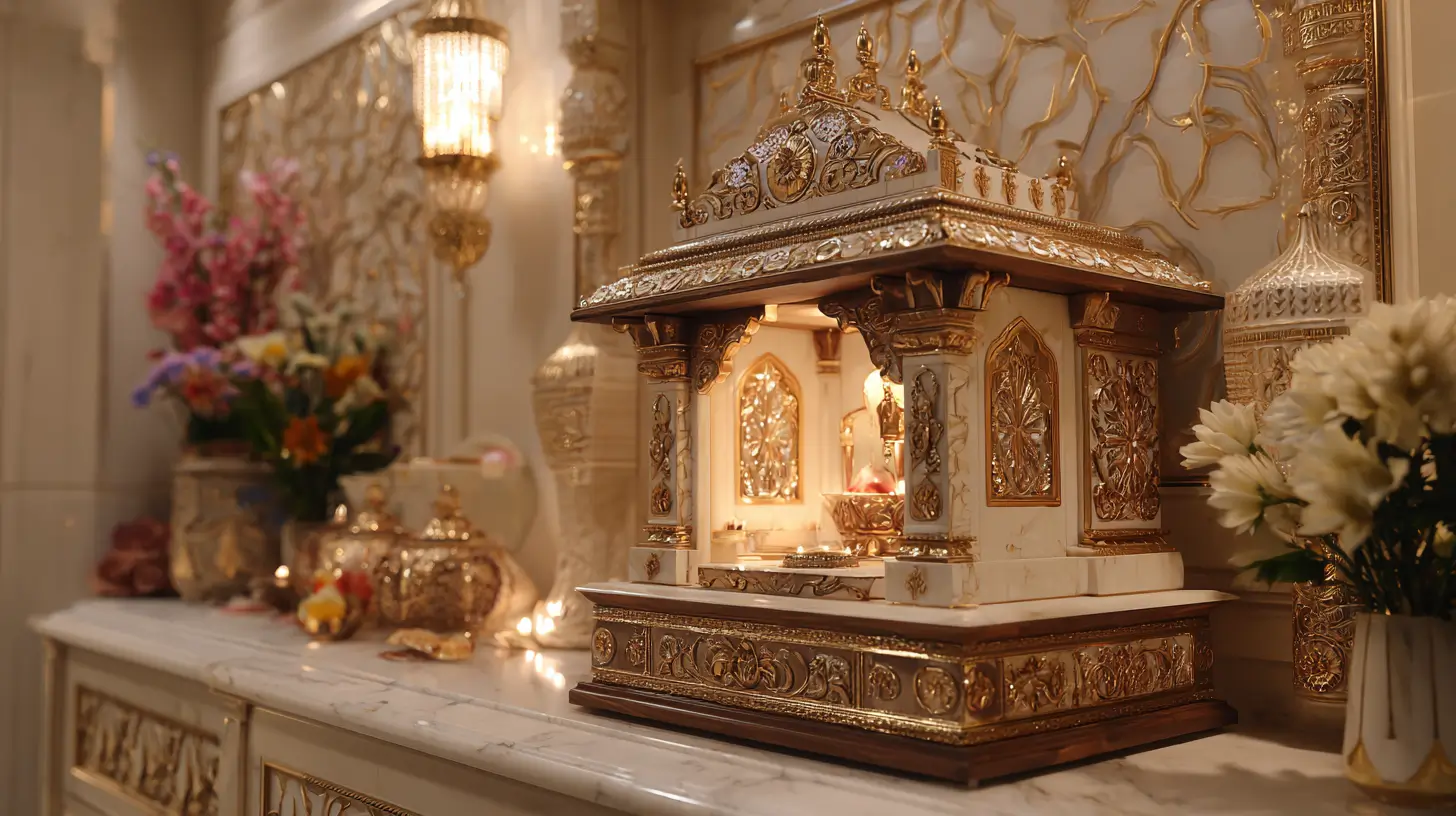
- Use light, soothing tones—white, cream, beige, light yellow or green.
- Natural light is encouraged—windows toward north or east; supplement with warm artificial lighting.
- Construct the mandir using high-quality, durable materials to maintain both spiritual purity and structural longevity—Prism Cement, known for its robustness, ensures the mandir remains stable and serene for generations.
How to Find the Right Direction for Your Mandir?
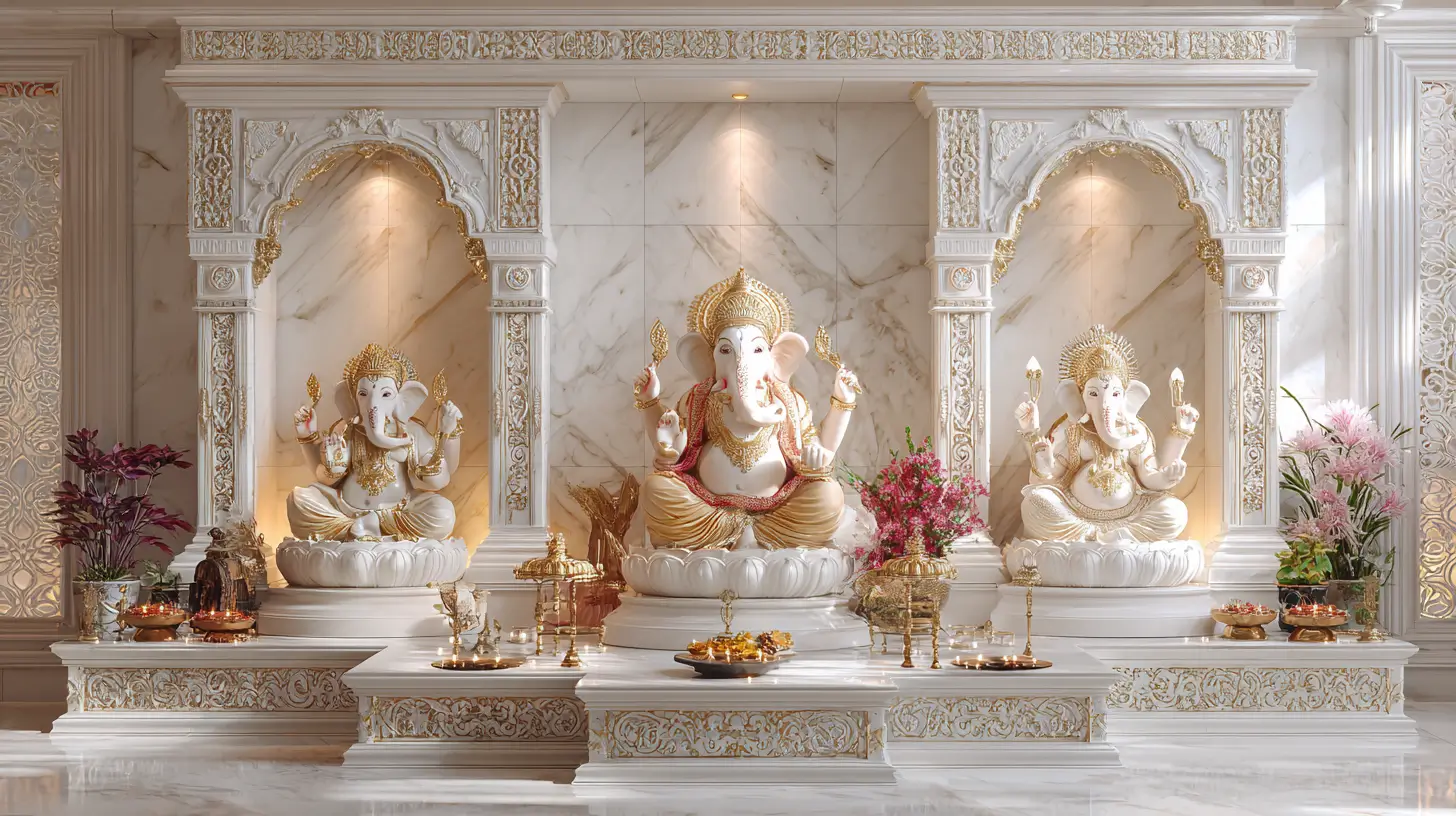
- Use a magnetic compass or smartphone app to accurately identify northeast, east, and north directions.
- Ensure the front of the mandir faces east or west—i.e., the back faces the auspicious direction.
- Verify that no bathrooms, staircases, or heavy storage are adjacent to the mandir.
- Confirm idols’ faces align as described.
- Keep the mandir area clean and well-lit, with a backdrop wall free of disturbance.
Conclusion
Adhering to mandir direction as per vastu ensures your sacred space is spiritually attuned and energetically balanced. By placing the mandir in the ideal northeast, or alternatively in the east or north, ensuring proper idol facetting, and maintaining cleanliness with light decor, homeowners can create a space that uplifts and nourishes.
Building your mandir with strong construction materials like Prism Cement not only anchors the space physically but also symbolizes a solid foundation for spiritual growth and harmony. With thoughtful placement and quality craftsmanship, your pooja room becomes a timeless sanctuary of peace.
FAQs
Q1. What is the most auspicious direction for placing a mandir at home as per Vastu?
Answer: Northeast (Ishan Kona) is considered the most auspicious; if unavailable, choose East or North.
Q2. Which directions should be avoided when placing a mandir in the house?
Answer: Avoid South and Southeast, due to their associations with fire and negative energies. Also avoid placement under or near toilets, staircases, or heavy storage.
Q3. Can a mandir be placed in rooms other than the pooja room, such as the living room or kitchen?
Answer: Yes—but only if the direction aligns correctly (northeast, east, or north), and the space is kept clutter‑free and tranquil. Bedrooms or kitchens are not ideal but can work if guidelines are diligently followed.
Q4. What is the recommended direction to face while praying in the mandir?
Answer: Ideally, you should face east or west while praying. If idols face east, you’ll face west—and vice versa. Deity faces should not face north or south directly.
Q5. Are there any specific guidelines for placing idols and items within the mandir?
Answer: Yes—place idols on a raised chowki, at modest height (feet near chest level), ideally around 7 inches tall. Avoid crowded layouts and ensure no idols face each other. Keep bright items like diyas and incense in the south or west corners of the room.

